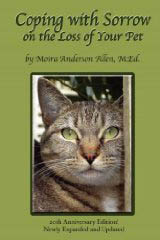 Your Guide to a Successful Writing Career
| |||
|
by Tim Lehnert
The readership for the magazines produced for major airlines numbers in the millions. In-flight magazines are usually monthlies with publication lead times of six months to a year. Pay rates average a dollar a word for the major carriers' publications, and less for those produced for smaller airlines. The primary audience for in-flight magazines is frequent flyers, often business travelers. As a group, they tend to have high levels of income and education. They are also savvy about technology and business trends, as well as travel and leisure pursuits. Moreover, Randy Johnson, Editor of United's Hemispheres, notes that in-flight readers are traveling while they look at the magazine; they are actual as opposed to armchair travelers. In-flights are diverse. Like fitness, women's, or health titles, there is considerable variation among publications within the category. Travel pieces are a staple of in-flights, yet airline publications also offer articles on technology, business, sports, and food, as well as lifestyle trends. Some in-flights feature celebrity profiles, fiction, humor and personal narratives, and most have at least one or two regular columns. In-flights are not static, "The only thing constant about in-flights is that they are constantly changing -- like any magazine," says Tim Harper, a frequent contributor to Delta's Sky magazine. "The editors always need more good ideas, more good stories and more good writers, but there are always shifts in focus or shape," says Harper, some of whose Sky pieces have been collected in the book Doing Good: Inspirational Stories of Everyday Americans at Home and at Work. [Editor's Note: Sky magazine was put on hiatus in the early days of the Covid pandemic, and as of this edit in 2023, has not come back into publication.]
Prospective in-flight writers should understand the content and tone of the magazine they wish to write for. Some in-flights feature conventional travel pieces along with some business and service pieces. Other publications aim more at cultural critique, while still others have a breezy, flip tone heavy on celebrity interviews and reviews of trendy gear. At the very least, you should check out the magazine's website and contributor's guidelines, if available, to understand what the editor might be looking for. Even better, obtain a hard copy. Since in-flights are not sold on newsstands, request a copy from the magazine's publisher, ask traveling friends for their help, or visit your local airport and see if you can snag several publications at once. Like all magazines, in-flights have defined formats. You need to figure out which parts of the magazine are open to freelancers, and then tailor your pitch for a particular section of the publication. "The biggest problem is that people do not get a copy of the magazine before they query the editor," says Leslie Forsberg, Senior Editor at the on-line publication Go World Travel Magazine, and former editor of Alaska Airlines' magazine. Sending a short story to an in-flight that does not publish fiction is a waste of time, as is offering to write a column that is penned by the editor of the magazine you are pitching. Hemispheres' Randy Johnson prides himself on his magazine's eclecticism, but stresses that the writer must still understand the magazine before querying, "We're the customer, you're the person who is selling the idea," he says. "We don't do the work of selling it for you." When querying an in-flight, it is crucial that you propose a story on a topic or place you know well. "If you read a Hong Kong restaurant story in Hemispheres, it will be by a Hong Kong writer," says Randy Johnson. Editors don't want a pitch that amounts to a simple recounting of your vacation. Hemispheres' "Three Perfect Days" section proposes activities to fill three days in a given city or area. According to Johnson, it is always written by a local who has insight into not just tourist attractions, but also the culture and feel of the place. "Beyond wanting things that fit the format, what I really want are those idiosyncratic distinctive ideas that a resident writer comes up with," he says. For the prospective in-flight writer, this means you can probably scrap your upcoming maiden trip to Paris as a topic for query. But people travel everywhere, and being a native of (or frequent visitor to) Tampa, Edmonton or Pittsburgh can serve you well if you have something insightful to say about these places. Leslie Forsberg notes that certain less glamorous geographical regions, as well as ones with fewer resident writers, offer opportunities for the freelancer. If you do decide to cover a big tourist destination, be specific. Tim Harper suggests that instead of proposing a general piece on London, "Offer to do a story on what it's like to walk through the Imperial War Rooms, with specific examples in the query about what a visitor can see and learn." In-flights receive many queries for travel pieces. Consequently, former Alaska Airlines magazine editor Forsberg suggests that it may be easier for a newcomer to break in by pitching an article on a business or service topic. Forsberg notes that many people want to write about vacationing in Hawaii, but not as many about meeting planning. If you have experience in a particular facet of business that can be applied to travelers, turn that to your advantage. If you are not a known commodity, another way to increase your chances of landing an article is to propose a short as opposed to a feature. This assumes, of course, that you've ascertained that the in-flight you are pitching doesn't write their short pieces in-house. It may also be easier to break into a magazine produced for a smaller airline, as opposed to the higher circulation magazines which often feature "name" writers. Finally, don't forget that the in-flight magazine market is global. You need not limit yourself to North American publications. There are many airlines based in English speaking countries other than the US and Canada. Even airlines from countries where English is not the primary language often publish part of their magazine in English, or have a separate English language edition.
The previous points apply to perhaps any magazine -- it always pays to do your homework and know your market. But while they share some similarities, in-flights are unlike newsstand magazines in several ways. As a general rule, you should only propose stories on destinations served by the airline you are pitching. Don't offer an article on whale watching off the Newfoundland coast, or where Chicago blues musicians go to catch a show, if the airline you are querying doesn't go near these places. It's also important to keep in mind not just where your audience might be headed geographically, but where they are physically as they look at the publication. "People who are reading the magazine are enclosed in a metal tube at 30,000 feet," says Randy Johnson. Not surprisingly, stories about "my scariest airplane flight ever" are clearly out of the question. Johnson says he welcomes provocative and thoughtful pieces, but not stories about natural disasters, terrorism or other topics that might agitate or upset people. And obviously articles about the inconveniences and frustrations of air travel, or jibes at the airline industry, are nonstarters. You wouldn't write a piece for a bridal magazine suggesting that weddings are a big waste of money; similarly an article that begins by describing your twelve-hour layover in Dallas, and concludes by observing that flying isn't what it used to be won't get you very far. The in-flight magazine market is competitive, although not impossible to crack. Tim Harper has written more than 100 pieces for Sky, and in the 1980s and 1990s did many articles for American Way. He got his start writing for in-flights over twenty years ago when he was casting around for new markets and landed an assignment with the publication of now defunct Trans World Airlines. This acted as a springboard for future assignments with other magazines. The best way to break in is to bring your own expertise to a publication. Randy Johnson of Hemispheres came to in-flight magazines from a background in writing about the outdoors and nature. In addition to serving as Editor-in-Chief of Hemispheres, he still writes freelance pieces and guidebooks, primarily about hiking and backpacking in the Southeast US. Johnson is also a co-author of The Age of Flight, which celebrates seventy-five years of air travel at United Airlines. Leslie Forsberg brought her experience at Sea Kayaker magazine to her former post as editor at Alaska Airlines Magazine. Even if you don't have a long list of publication credits or an impressive resume, you can still break into the in-flight market. How? Do your research -- both about your topic and the publication you are pitching, rely on your particular expertise about a place or subject matter, and produce insightful, error free copy aimed at a sophisticated audience of frequent travelers.
This article may not be reprinted without the author's written permission. Tim Lehnert lives in Cranston, Rhode Island where he is a freelance writer and stay-at-home father. He has an MA in Political Science from McGill University, an MA in Writing from California State University, Northridge, and BA in Political Studies from Queen's University. His features, columns and articles have appeared in the Boston Globe, the Christian Science Monitor, the Montreal Gazette, the Providence Journal, the Providence Phoenix, Rhode Island Monthly, The Writer, Today's Parent and other publications. |
| ||
| |||




